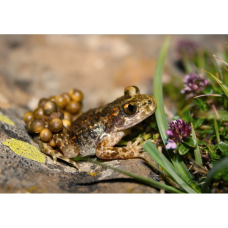Les séminaires de l’ISYEB accueillent Julie Marin, Collège de France

Soutenance de thèse en amphithéâtre Rouelle

Soutenance de thèse en amphithéâtre Rouelle
The Genomic view of diversification
Evolutionary relationships between species are traditionally represented in the form of a tree, called the species tree. The reconstruction of the species tree from molecular data is hindered by frequent conflicts between gene genealogies. A standard way of dealing with this issue is to postulate the existence of a unique species tree where disagreements between gene trees are explained by incomplete lineage sorting (ILS) due to random coalescences of gene lineages inside the edges of the species tree. This paradigm, known as the multi-species coalescent (MSC), is constantly violated by the ubiquitous presence of gene flow revealed by empirical studies, leading to topological incongruences of gene trees that cannot be explained by ILS alone. Here we argue that this paradigm should be revised in favor of a vision acknowledging the importance of gene flow and where gene histories shape the species tree rather than the opposite. We propose a new, plastic framework for modeling the joint evolution of gene and species lineages relaxing the hierarchy between the species tree and gene trees. As an illustration, we implement this framework in a mathematical model called the genomic diversification (GD) model based on coalescent theory, with four parameters tuning replication, genetic differentiation, gene flow and reproductive isolation. We use it to evaluate the amount of gene flow in two empirical data-sets. We find that in these data-sets, gene tree distributions are better explained by the best fitting GD model than by the best fitting MSC model. This work should pave the way for approaches of diversification using the richer signal contained in genomic evolutionary histories rather than in the mere species tree.



